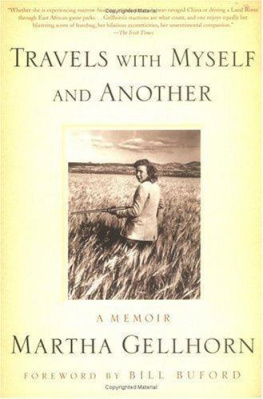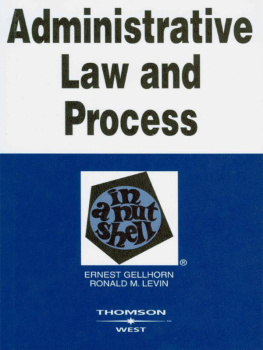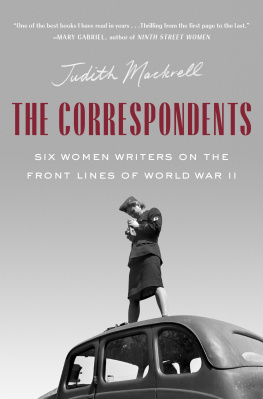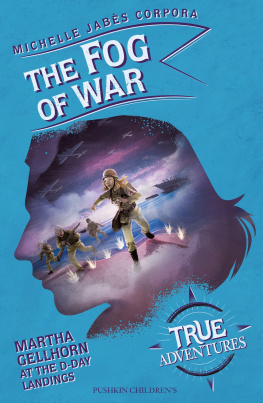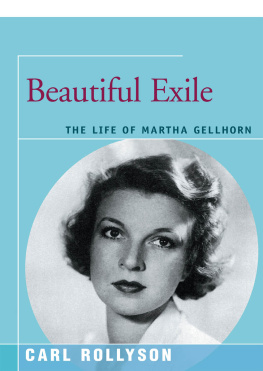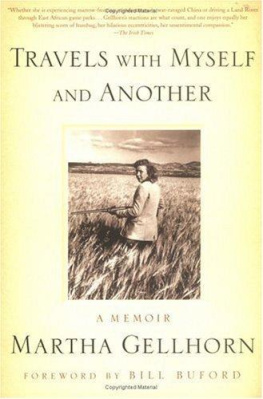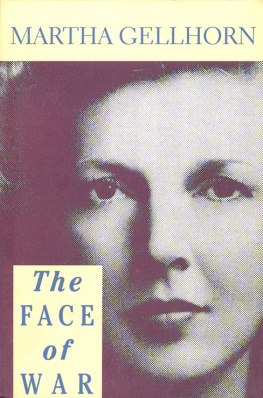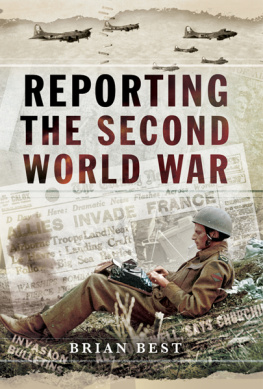Table of Contents
By the same author
FICTION
The Trouble Ive Seen
A Stricken Field
The Heart of Another
Liana
The Wine of Astonishment
The Honeyed Peace
Two by Two
His Own Man
Pretty Tales for Tired People
The Lowest Trees Have Tops
The Weather in Africa
NONFICTION
The Face of War
The View from the Ground

Idaho, 1940

Most Tarcher/Putnam books are available at special quantity discounts for bulk purchase for sales promotions, premiums, fund-raising, and educational needs.
Special books or book excerpts also can be created to fit specific needs. For details, write Putnam Special Markets, 375 Hudson Street, New York, NY 10014.
Jeremy P. Tarcher/Putnam
a member of
Penguin Putnam Inc.
375 Hudson Street
New York, NY 10014
www.penguinputnam.com
First published in 1978 by Eland
First Jeremy P. Tarcher/Putnam Edition 2001
Copyright 1978 by Martha Gellhorn
Introduction copyright 2001 by Bill Buford
photo on page iv Lloyd Arnold/Archive Photos, print courtesy of The John F. Kennedy Library; photo on page xxii by Ruth Rabb; photo on page 8 courtesy of The John F. Kennedy Library; photo on page 58 U.S. Navy, courtesy of The John F. Kennedy Library; photo on page 106 by Ruth Rabb; photo on page 240 courtesy of The John F. Kennedy Library; photo on page 284 courtesy of The John F. Kennedy Library; photo on page 292 Lloyd Arnold/Archive Photos, print courtesy of The John F. Kennedy Library
All rights reserved. This book, or parts thereof, may not
be reproduced in any form without permission.
Published simultaneously in Canada
Library of Congress Cataloging-in-Publication Data
Gellhorn, Martha, 1908-1998
Travels with myself and another / Martha Gellhorn.
p. cm.
Originally published: London: Allen Lane, 1978.
eISBN : 978-1-585-42090-2
http://us.penguingroup.com
For Diana Cooper with long-lasting love
The good traveller doesnt know where hes going.
The great traveller doesnt know where hes been.
CHUANG TZ
Leap before you look.
OLD SLAVONIC MAXIM
Oh S. the sights are worse than the journeys.
SYBILLE BEDFORD, A VISIT TO DON OTAVIO
INTRODUCTION
My dear William. Note: thats William. Not Bill. You must change your name. No one will ever take you seriously as Bill. Bill Buford? No, it just wont do. And your hair. Youve got to do something with your hair. And that beard? Shave it. You look like Allen Ginsberg. Im quoting Martha Gellhorn, a characteristic letter, imperious, forthright, even bullying. Martha was a novelist, a war correspondent and, with the publication of Travels with Myself and Another in 1978 (when she was just turning sixty), a travel writer of a wildly original voice. She died in 1998. I had the privilege of publishing some of her work during her last decade, her ninth.
I forgot to add, William. You must buy new trousers that dont look like what the well-dressed young elephants are wearing this year. How else can you win the Iranians love? The Iranian in question was a particularly elusive girlfriend. Martha tutored me on matters of the heart, and on drinking (you could never drink enough), on my appearance (a disaster), and on my mannersespecially my manners: my manners, in Marthas eyes, were catastrophic.
Ill be in London for a few days later this month, she wrote me after we had a row arising out of another one of my behavioral misdemeanors, and the exchange must have lead to Marthas being so rudeand I infer this from the correspondence that Im rereading for the first timethat I sank into a sulk.
If you dont return my call, Ill sadly take it that you wish to sever relations forever. A pity. But think about it, William. I may be the only old person you know, and elders and betters are necessary as I know with despair, now that all of mine are dead.
The elementary facts of her life: born in 1908, in St. Louis, the place, according to Martha, that everyone flees from (and thus the ideal nurturing ground for a travel writer); bossy, straight-talking, cigarette-smoking; the boozy reporter of wars and of the plight of the down-and-out; also a writer of short stories, novellas, and novels. She was married to Ernest Hemingway, and she hated the fact that, whenever her work was written about, his name was invariably mentioned as well, just as Im mentioning it now. But its hard to avoid. The two of them met when the world was at its most dramatic. They fell in love at the outbreak of the Spanish Civil War and divorced once World War II had endedand in between was Cuba and big-game hunting and trips to China and battlefields in Finland and Barcelona and the beaches of Normandy. She rarely admits his existence, which makes his depiction here, in Mr. Mas Tigers, a great rarity. Hes the U.C. referred to, the Unwilling Companion (she wouldnt, of course, use his name), and he comes across as a rascal of pranks and charm, held affectionately dear. Its Martha, for instance, who insists that, despite Hemingways enthusiasm for Chinese fireworks, he simply has got to stop lighting them in the bedroom. Could there be any two people more romantic? By then he was Papa Hemingway, and she was, what, blonde and thin and sassy, a starlet of the highest order, a young Lauren Bacall, except that she was a whole lot brainier than a young Lauren Bacall, but just as sexy. There was a glamour about Martha Gellhorn, the glamour of black-and-white movies. It was in her manner and her way with the ways of the world. She was a dame.
In 1983, I hadnt read Martha Gellhorn, but I was living in England and editing a literary magazine and putting together an issue of travel writing, and someone said I should ask her to contribute. I had missed the publication of Travels with Myself and Another, which appeared only five years before. I now believe I missed it because the book was written before its time (and therefore hadnt fully caught on), even though most of the episodes described in it occurred many years before. Curiously, the book tells us as much about Gellhorn as the places she visits (curiously, because she was deeply private), and, in this, writing stories about journeys that are, finally, about many more things than the journeys themselves, she prefigures the works of people like Bruce Chatwin and Paul Theroux and Jonathan Raban and the renaissance of first-person adventure writing. I contacted GellhornI got her address from someoneand a piece about a trip to Haiti was the result (something I only now recall had been originally intended for this volume but wasnt finished in time). The piece was dramatic and eventful (a white woman on an island of angry blacks who nearly gets stoned) and full of what I would come to recognize as Gellhorn ragethe irrepressible, passionate rage against injustice. Gellhorn alludes to this rage in her account of visiting Mrs. Mandelstam (Mrs. M.), the widow of the great poet, one of the last and most moving essays in this volume. At some point, the famous widow describes living in constant fear, and she asks Martha if she, too, feels fear all the time. No, Martha says in reply (sharply, I imagine, definitively, without hesitation). I feel angry. Every minute about everything. No one was so capable of rage or of being so poetic expressing it.
The Big Picture always exists, she wrote, and by Big Picture she means the drama of power brokers and politicians and corporations. And I seem to have spent my life observing how desperately the Big Picture affects the little people who did not devise it and have no control over it. She was engaged by politics but hated politicians, and the ones who figure in this volume, like those who appeared throughout her life, are insufferably boring (and, in the Gellhorn vocabulary, there is no more damning thing to be). I expected powerful political people to be boring, she writes here, on meeting Chiang Kai-shek and his wife. It comes from no one interrupting or arguing or telling them to shut up. The more powerful the more boring. Politics, she declares during her trip across the equator of Africa (she had never been; it seemed like a journey worth taking; why not?), is the bungling management of the affairs of men. It is a game played among themselves by a breed of professionals. What has politics to do with real daily life, as real people live it?
Next page
